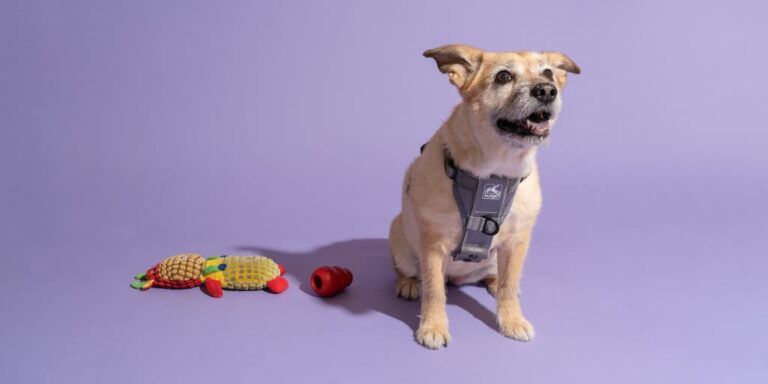The best collar for dog training is a martingale collar or a front-clip harness. These collars provide gentle control and help prevent choking.
Choosing the right collar for dog training is crucial for effective and comfortable training sessions. While there are various types of collars available, it’s important to select one that aligns with positive reinforcement training methods. Martingale collars and front-clip harnesses are popular choices among professional trainers as they provide gentle control without causing discomfort to the dog.
Understanding the benefits of each type of collar and considering the individual needs and behavior of the dog will ultimately lead to a successful training experience. By utilizing the appropriate collar, pet owners can establish a strong bond with their furry companions while promoting positive behavior.
Understanding Dog Training Collars
There are different types of collars used for dog training, each serving a specific purpose. Training collars are designed to help modify a dog’s behavior, while regular collars are mainly for identification and restraint. Understanding the difference between the two is crucial in choosing the right collar for training purposes.
Training collars can assist in teaching obedience and addressing behavioral issues. By using corrective signals, such as vibrations or mild shocks, these collars can reinforce commands and discourage unwanted behavior. When used properly, they can speed up the training process and improve communication between the owner and the dog.
It is essential to prioritize the safety and well-being of the dog when using training collars. Proper fitting and monitoring are crucial to prevent any discomfort or injury. Additionally, it is important to seek guidance from professional trainers to ensure the appropriate and humane use of training collars.
Types Of Training Collars Reviewed
Standard Flat Collar for Basic Training: The standard flat collar is a classic option for teaching your dog basic commands and leash manners. It is easy to use and provides a comfortable fit for most dogs.
Martingale Collars for Controlled Leash Walking: Martingale collars are designed to prevent your dog from slipping out of the collar while providing a gentle, evenly distributed pressure for controlled leash walking.
Head Collars for Managing Pulling Behaviors: Head collars are effective for managing pulling behaviors as they gently guide the dog’s head, redirecting their attention without causing discomfort or pain.
Remote-Controlled E-Collars for Distance Commands: Remote-controlled e-collars are suitable for distance commands, allowing you to deliver adjustable levels of stimulation to reinforce training cues from a distance.
Harnesses for Dogs With Neck Issues: Harnesses are ideal for dogs with neck issues as they distribute the pressure across the chest, preventing strain on the neck during training exercises.
Expert Tips For Selecting Collars
For selecting a dog collar, it’s crucial to consider the size and fit to ensure proper comfort and control during training. The collar should be durable, made of high-quality material to withstand long-term use, and not cause any discomfort for the dog. Additionally, it’s important to take into account the dog’s temperament to determine the most suitable collar type. Some dogs may respond better to certain collar styles based on their behavior and personality. Furthermore, adjustable collars are ideal for growing pups, as they can be resized to accommodate their changing size as they develop. This ensures that the collar remains effective and comfortable as the dog grows.
Training With Collars: Best Practices
When it comes to choosing the right collar for training your dog, positive reinforcement techniques are key. Positive reinforcement is a powerful tool for shaping your dog’s behavior in a gentle and effective way. By using treats, praise, and rewards, you can encourage your dog to learn and respond to training with enthusiasm.
Introducing your dog to a new collar should be a gradual process. Start by allowing your dog to sniff and investigate the collar before putting it on. Once your dog is comfortable, gradually increase the amount of time they wear the collar, always pairing the experience with positive reinforcement. This approach helps your dog form positive associations with their new collar.
It’s important to avoid common mistakes such as using the collar for punishment or corrections, which can lead to stress and fear. Instead, focus on using the collar as a tool for communication and guiding your dog’s behavior in a positive way. Consistency and patience are essential for successful collar training.
During training sessions, pay attention to your dog’s body language and behavior to recognize any stress signals. Signs of stress may include yawning, lip licking, or avoidance behaviors. If you notice these signals, it’s important to reassess your training approach and ensure that your dog feels comfortable and safe throughout the training process.
Field Review: Top Collars In Action
Real-life scenarios and collar performance are crucial factors in determining the best collar for dog training. Professional dog trainers’ feedback provides valuable insights into the effectiveness of different collar types in various situations. Additionally, owner testimonials highlighting their long-term results with specific collars offer practical information for dog owners seeking the most suitable training collar for their pets.
Maintenance And Care For Training Collars
Cleaning and Storing Your Dog’s Collar: To ensure the effectiveness of your dog’s training collar, it’s essential to regularly clean it. Use mild detergent and water to gently scrub the collar, and then rinse thoroughly. Allow it to air dry completely before putting it back on your dog to prevent discomfort. When it’s not in use, store the collar in a clean, dry place to minimize any potential damage.
When to Replace Your Dog’s Training Collar: Keep a close eye on your dog’s collar for signs of wear and tear. If you notice any fraying, cracking, or weakening of the material, it’s time to replace it. A damaged collar can compromise the effectiveness of training and pose a safety risk to your dog.
Recycling Old Collars Responsibly: When it’s time to retire your dog’s training collar, consider recycling it responsibly. Check with local pet supply stores or animal shelters to see if they accept old collars for reuse or recycling. This environmentally-friendly approach ensures that the materials are properly handled and reduces unnecessary waste.

Credit: www.skyhorsepublishing.com
Frequently Asked Questions For What Type Of Collar Is Best For Dog Training
What Type Of Collar Is Best For Dog Training?
The best type of collar for dog training depends on your dog’s behavior and your training goals. Martingale and prong collars are effective for larger dogs, while headcollars and harnesses are better for smaller breeds. Consult with a professional trainer to determine the right collar for your dog.
Are Choke Chains Effective For Dog Training?
Choke chains are not recommended for dog training as they can cause injury and discomfort. Positive reinforcement and reward-based training methods are more effective and humane. Using a choke chain can lead to behavioral issues and damage the bond between you and your dog.
Seek guidance from a professional trainer for positive training techniques.
When Should A Harness Be Used For Dog Training?
A harness should be used for dog training when your dog tends to pull on the leash or when they have respiratory issues. Harnesses distribute the force evenly across your dog’s body, reducing strain on their neck and back. It’s an ideal training tool for smaller breeds and dogs with neck or trachea problems.
Can Prong Collars Be Used For All Dog Breeds?
Prong collars are not suitable for all dog breeds, especially small or sensitive breeds. These collars are designed for larger, strong-willed dogs that have not responded to other training methods. It’s crucial to consult with a professional trainer before using a prong collar to ensure it’s the right choice for your dog’s behavior and temperament.
Conclusion
The best collar for dog training depends on the individual dog’s behavior, needs, and training goals. It’s important to consider factors such as the dog’s size, breed, and temperament when choosing a collar. Ultimately, the key is to use the collar in a humane and effective manner to ensure positive training outcomes.



